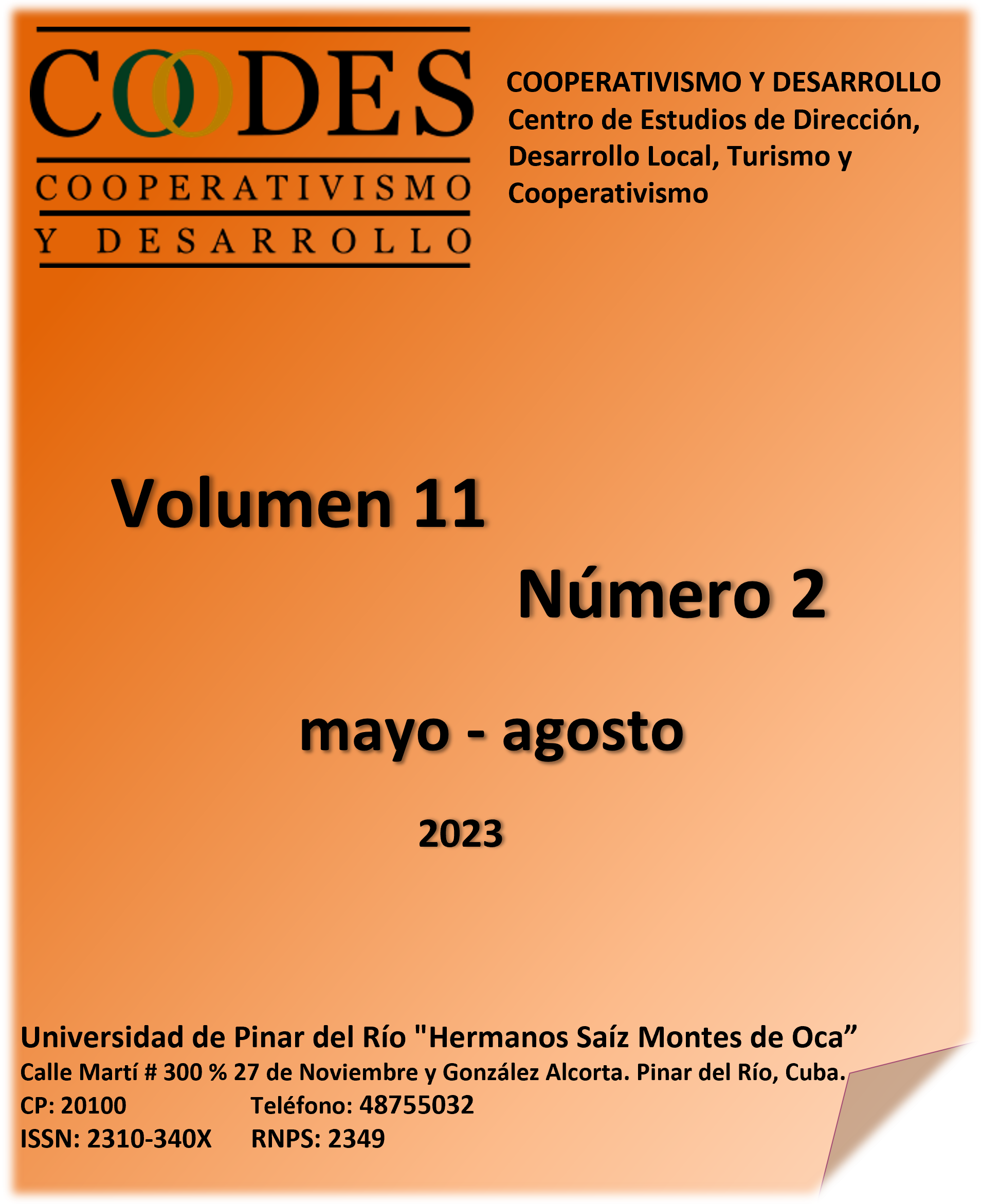Introduction of modalities in tourist destinations. Case study: Shopping tourism
Main Article Content
Abstract
Downloads
Article Details

This work is licensed under a Creative Commons Attribution-NonCommercial 4.0 International License.
References
Albert Piñole, I. (2015). Gestión de viajes, servicios y productos turísticos. Centro de Estudios Ramón Areces.
Benur, A. M., & Bramwell, B. (2015). Tourism product development and product diversification in destinations. Tourism Management, 50, 213-224. https://doi.org/10.1016/j.tourman.2015.02.005
Bulnes Mann, D. M. (2021). Turismo de compras: Retos, oportunidades y estrategias de desarrollo para el destino La Habana. Explorador Digital, 5(1), 365-388. https://doi.org/10.33262/exploradordigital.v5i1.1508
Dwyer, L., & Kim, C. (2003). Destination Competitiveness: Determinants and Indicators. Current Issues in Tourism, 6(5), 369-414. https://doi.org/10.1080/13683500308667962
Ernst & Young S.L. (2015). La nueva era del travel retail: Impactos y retos del turismo de compras. Centro de Estudios de la Ernst & Young S.L. https://datos.portaldelcomerciante.com/userfiles/167/Biblioteca/6d69a80a9ae8fc63029cInforme-Ernst-and-Young-2015-la-nueva-era-del-travel-retail-impactos-y-retos-del-turismo-de-compras.pdf
García Esteban, C., Gómez Loscos, A., & Martín Machuca, C. (2023). La recuperación del turismo internacional en España tras la pandemia (Boletín económico N.o 08). Banco de España. https://repositorio.bde.es/handle/123456789/25114
Hu, Y., & Ritchie, J. R. B. (1993). Measuring Destination Attractiveness: A Contextual Approach. Journal of Travel Research, 32(2), 25-34. https://doi.org/10.1177/004728759303200204
Jiménez Baños, P., & Aquino Jiménez, F. K. (2012). Propuesta De Un Modelo De Competitividad De Destinos Turísticos. Estudios y Perspectivas en Turismo, 21(4), 977-995. https://www.redalyc.org/articulo.oa?id=180724056010
Llanes Rosales, D., & Bulnes Mann, D. (2017). Propuesta de la matriz de atractividadCompetitividad en función de las modalidades turísticas. Explorador Digital, 1(4), 32-42. https://doi.org/10.33262/exploradordigital.v1i2.320
Martín Fernández, R. A. (2009). Principios, organización y práctica del turismo. Félix Varela.
OMT. (2020). World Tourism Barometer and Statistical Annex, January 2020 (N.o 18). Organización Mundial del Turismo. https://www.e-unwto.org/doi/abs/10.18111/wtobarometereng.2020.18.1.1
OMT. (2023). World Tourism Barometer and Statistical Annex, January 2023 (N.o 21). Organización Mundial del Turismo. https://www.e-unwto.org/doi/abs/10.18111/wtobarometereng.2023.21.1.1
Sánchez Manzanares, C. (2020). Terminología del turismo y variación conceptual: Análisis del nuevo léxico para modalidades turísticas por motivación. Études Romanes de Brno, 41(2), 271-293. https://doi.org/10.5817/ERB2020-2-16
Torres Pérez, R. (2018). Comercio y ciclo económico: Construcción de un índice de economía exterior para Cuba. Economía y Desarrollo, 159(1). https://revistas.uh.cu/econdesarrollo/article/view/1982
Valls, J. F. (2004). Gestión de destinos turísticos sostenibles. Ediciones Gestión 2000. http://www.marcialpons.es/libros/gestion-de-destinos-turisticos-sostenibles/9788480885003/
Vega Falcón, V., Castro Sánchez, F., & Romero Fernández, A. J. (2020). Impacto de la Covid-19 en el turismo mundial. Universidad y Sociedad, 12(S1), 207-216. https://rus.ucf.edu.cu/index.php/rus/article/view/1777


